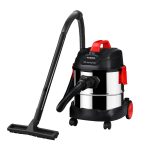Last Updated on March 4, 2023 by admin

The first step in creating a minimum viable product is to build an audience for it. You can do this through blogging, which is a great way to sell an idea and build a list fast. Once you have an audience, you need to listen to what they need. Learn their aspirations and pains, and then develop a minimum viable product that addresses those needs.
List all of your features and kill most of them
Creating a minimum viable product is a crucial step in the development of a new product. It demonstrates the viability of an idea and reduces the risks associated with it. It also reduces rework and development time. This process allows entrepreneurs to quickly demonstrate the viability of their idea to investors.
A minimum viable product (MVP) is a product that contains only the most essential features. This product can be as simple as a Google ad, PowerPoint slide, dialog box, or landing page. It can often be built in a single day.
User flow
The first step to building an MVP is to identify your target audience and understand their mentality. You will want to know what they value, how they spend their time, and how you can help them. This will help you determine the best way to design your product. If you are creating a mobile app, for instance, you should focus on the core functionalities of the app.
A user flow is a process mapped out by the user to use your product. It can be for a specific function, or it can cover the whole product. A user flow can help you identify their needs and answer any questions they might have. It can also help you understand where they will be disinclined to use your product, and what information or features they will most likely want.
Wireframes
Wireframes are an inexpensive way to develop a Minimum Viable Product (MVP). They help you communicate with your team and get feedback from users. They also help you stay on budget and on track with your project. They can be revised and improved as needed. A good wireframe allows you to communicate with your developers as well as your team.
Before you start building your MVP, you must define your target audience and know their needs. For example, a young person may have very little time to spend on an app. However, a high-status businessman will value his time. You must also know your audience’s psychology to develop a product that will appeal to them.
Customer journey map
A customer journey map is a tool that helps you analyze customer behavior and determine what steps they take to make a purchase. In doing so, you can understand your target audience better and determine the best way to serve them. For instance, you might notice that your target audience is increasingly affluent, but still has a low tolerance for costs, while another persona might be skeptical of your product’s value proposition. A customer journey map helps you pinpoint these problems and can help you design experiences that are more valuable to your target audience.
A customer journey map is an important part of creating a minimum viable product. It’s an invaluable tool that can guide the development process and help you avoid scope creep. A customer journey map helps you visualize your customer’s journey, from initial attraction to post-purchase support. It’s also a helpful way to gather valuable feedback from actual customers and prospects.
UI and UX
When creating a Minimum Viable Product, you don’t have to have the most visually appealing product in the world. Instead, focus on developing the most usable and intuitive experience possible. By doing so, you can reduce the damage that will be done to the overall concept and audience.
The first step in creating a Minimum Viable Product is to create a prototype. This prototype is not fully functional, but it does showcase the ‘how’ of the product. By making a prototype, you will be able to visualize what the users will experience in your Minimum Viable Product.
Using your MVP will allow you to gather feedback from users to ensure your product is valuable and appealing to users. By collecting user feedback and integrating their suggestions, you can make improvements and improve your product. This will allow you to save money on budgets and operational expenses.


























